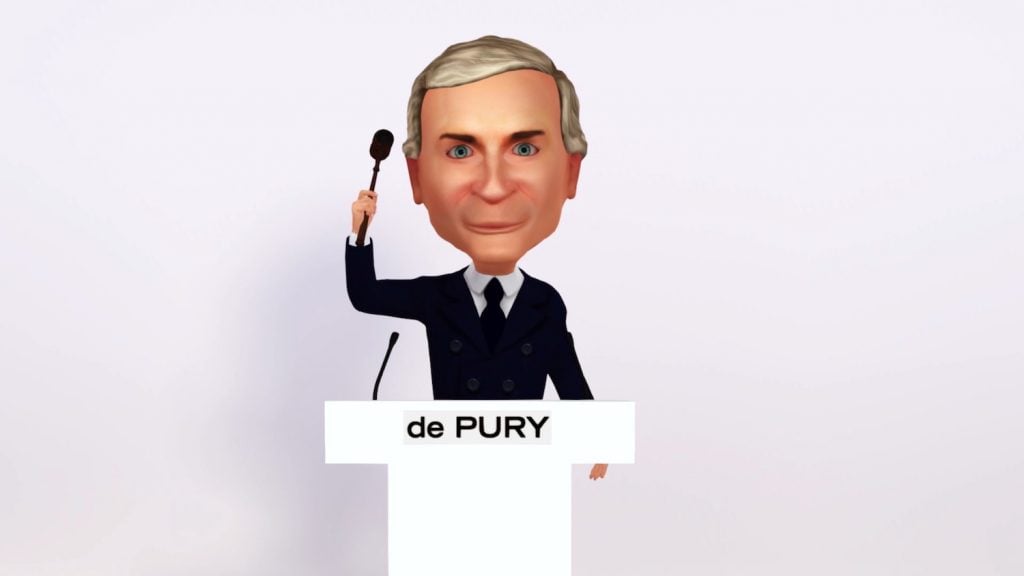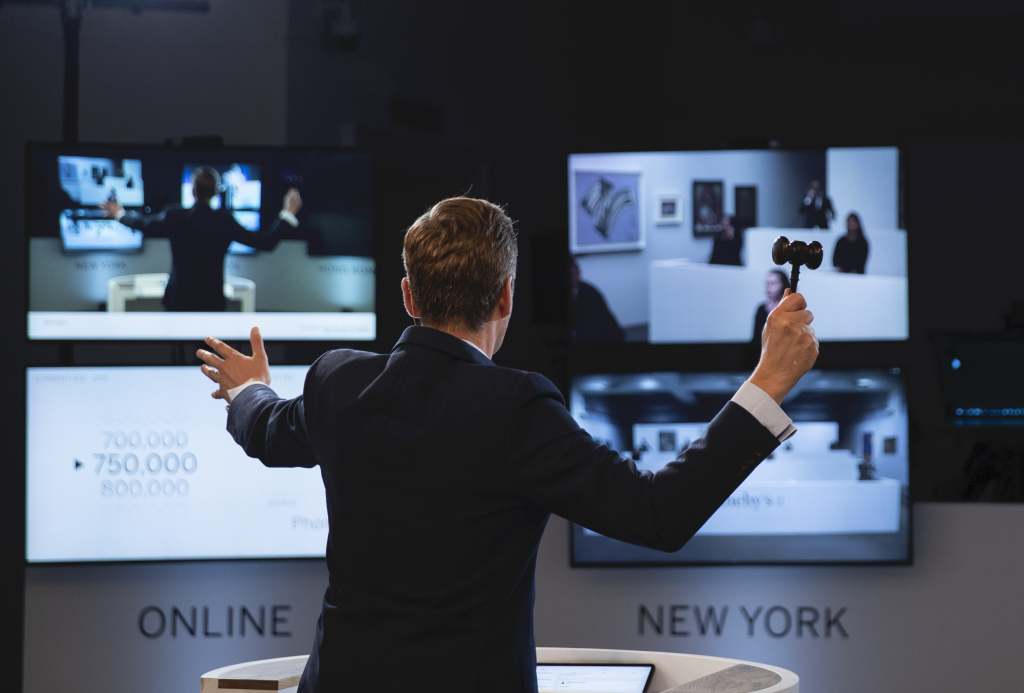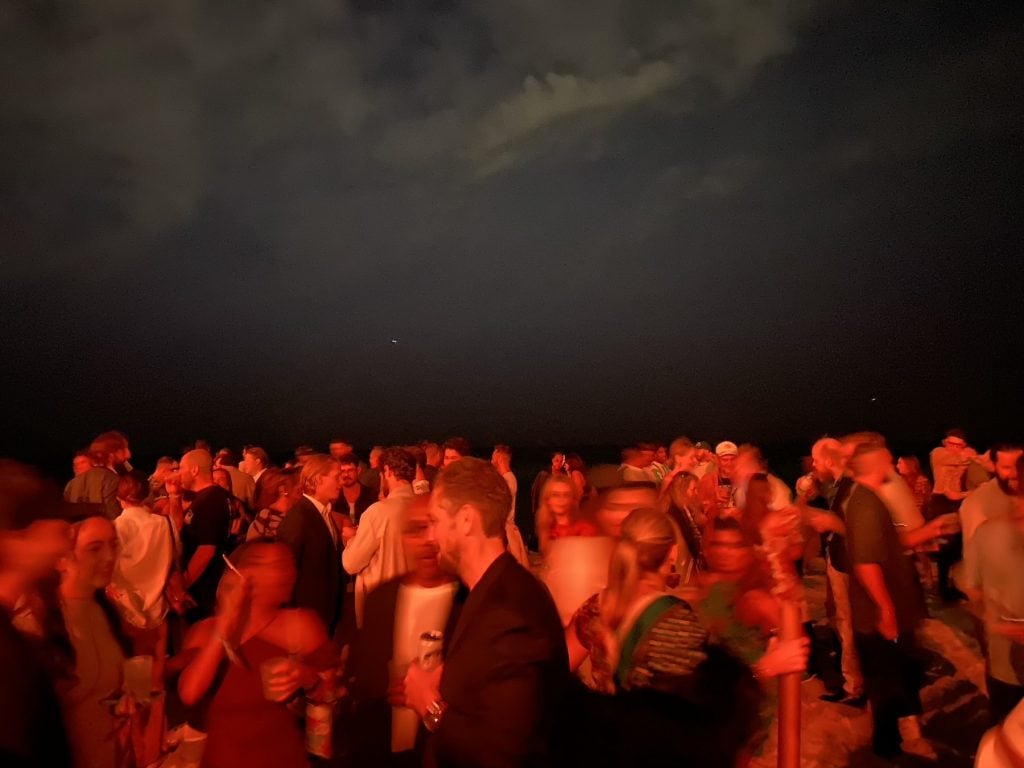The Hammer
We’re (Nearly) Ready to Automate the Art Industry
Plus, why we should expect more consolidation among art advisors.

Plus, why we should expect more consolidation among art advisors.

Simon de Pury

Every month in The Hammer, art-industry veteran Simon de Pury lifts the curtain on his life as the ultimate art-world insider, his brushes with celebrity, and his invaluable insight into the inner workings of the art market.
It feels as if it was only yesterday that this year began with some anguished anticipation as to how the far from encouraging world events would continue to unfold.
The older you get the more time seems to be accelerating. The more you do, whether productively or simply running away from yourself, the digits of the clock on your cell phone are spinning so fast as to make you dizzy.
There is actually a way, I found out, to make time stop for a while.
Six years ago I enrolled for a weekly retreat called the Hoffman Process. On arrival you had to hand in your cell phone and during the whole week you were not allowed to read any newspapers nor to access the internet nor to watch any television. You were completely cut off from the outside world including your clients, colleagues, family, friends and loved ones. During the first 24 hours I was feeling very itchy about it all, convinced that I was missing out on so many hugely important things. At the latest by the third day I embraced it all and to my total amazement time stood completely still. We were getting up at 6 a.m. every morning and by 10 a.m. it felt as if an eternity had passed. When the week ended I had to readjust as if I had been away on a six-week holiday. To my big surprise the world had continued to move very effectively without any of my input.

Auctioneer Oliver Barker holding court over Sotheby’s global e-auctions. Courtesy of Sotheby’s.
The early phase of the Covid-19 induced lockdown was a bit like a global retreat. The temporary slowdown of activity and time made you analyse things with the necessary perspective and distance. Your vision of what you wanted to do and how, once things would pick up again, became crystal clear.
The minute the restrictions imposed by the health authorities around the world were lifted everyone dived into frantic activity. I for one travelled more extensively than ever before with an insatiable appetite wanting to make up for what I had ‘missed’ in the meantime. Gradually the clarity I had gained for how to do things differently started to dissipate.
I will try to focus here on how all this affects the microcosm of what we call the art world and the art market.
The pandemic demonstrated a few things: The vast majority of auction buyers acquire works that they haven’t physically seen prior to the auctions. They can of course ask the auction firms for a condition report and they can send someone they trust to inspect the actual works. It was also proven that buyers don’t need to be in the sale room themselves to experience auction fever. The main sale rooms of Sotheby’s, Christie’s, and Phillips in New York, Hong Kong and London got transformed into TV/film studios. The auctions themselves became attractions that were competing with spectator sports and were being followed by ever growing numbers of viewers around the world, even if only a fraction of them would actually bid. The big galleries participating in the main art fairs such as Art Basel in Basel, Miami, Hong Kong and Paris or Frieze in London, New York, Los Angeles and Seoul would send digital images of all the works on offer to all their main clients ahead of the opening of the fairs.
Post pandemic the public is back in the sale rooms and huge crowds are trampling through the booths of the many fairs around the world. Yet the main evening auctions are no longer the true reflection of the result of competitive bidding. The minute a $10 million+ work is being proposed by its owner to an auction house, the main potential contenders for the work are instantly approached by it to see if they would like to give a third party guarantee. The vast majority of the top lots in the past November evening sales went to the third party guarantors, so that the viewers were not able to witness real competition between bidders which after all is what auctions were originally meant for. You can be the first one through the gate at any of the big fairs for their VIP previews yet it is highly unlikely that you will be able to acquire any of the works on view since they will have been spoken for ahead of the fair. In some ways the big auctions and the main fairs have become big social rituals and show pieces that have been emptied of their original purpose.

The crowd at the annual White Cube party during Art Basel Miami Beach, 2023. Photo by Annie Armstrong.
I remain convinced that the way the art market currently works will have to change fundamentally. The commission rates being charged by the main auction firms for works being sold between $10,000 and $3 million are outrageously high. To leave as a vendor 25 percent to 30 percent on the table simply stands in the way of the art market becoming significantly wider and larger. Sotheby’s have recently rejigged completely the way they charge their commissions.
At the time of writing this it is not known yet if Christie’s and Phillips will decide to imitate them. Making a distinction between what Sotheby’s will charge its vendors and its purchasers is purely academic. As a vendor you don’t care how much commission is being charged to the vendor and how much to the buyer. The only thing that matters is the overall price difference between what the buyer pays to the auction company and what you get paid out as a vendor. As a buyer the sole thing that matters is the total price you have to pay. You don’t care how much of it goes to the vendor. The new commission scheme of Sotheby’s is also seen as a way to squeeze out the many art advisors. As a result of it one will no doubt see more consolidation and joining of forces done by professional advisors, many of which are former auction house executives or specialists.
With a minimal infrastructure I have been trying over the last year or two to revolutionize the way online auctions are being made at the price segment described above. First of all there is zero need to ship the works to any auction location. This cuts dramatically the costs and the negative environmental impact. There is equally zero need to have any printed material of any sort for these sales. The experts instead of communicating their wisdom in person with a select happy few can do so effectively with an unlimited group of potential customers with film snippets made on an iPhone.
Now how do you transpose the electricity, show biz fun and excitement of the live saleroom to your iPad screen? My wish is to have avatars of myself and of three to four additional auctioneers of various genders, ethnicities, and ages. They would make double flips when you reach a certain price level and triple somersaults when a price record is achieved. All of this would be accompanied by beats provided by the hippest DJs in the music industry.
Despite the many reports I constantly read about the speed of light development of AI my wish for the time being is only a dream. This dream could be implemented now but at a considerable financial cost. I am told by tech specialists that if I wanted to have an avatar of myself that would make people believe it is actually me conducting an auction it would be infinitely simpler and less expensive. This all means that for the time being I will need to continue conducting my numerous auctions, whether they are caritative or commercial, as a living person. The thought of my caricature avatar beavering away 24/7 while I rest under coconut trees was sadly slightly premature.
Simon de Pury is the founder of de PURY, former chairman and chief auctioneer of Phillips de Pury & Company, former Europe chairman and chief auctioneer of Sotheby’s, and former curator of the Thyssen-Bornemisza Collection. He is an auctioneer, curator, private dealer, art advisor, photographer, and DJ. Instagram: @simondepury